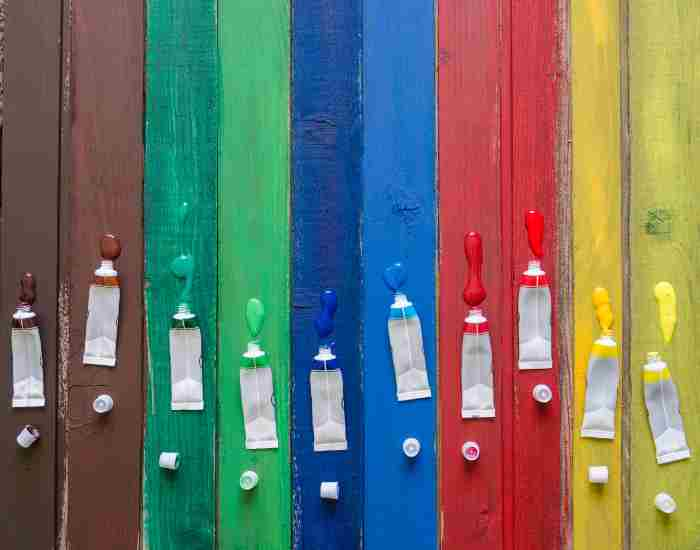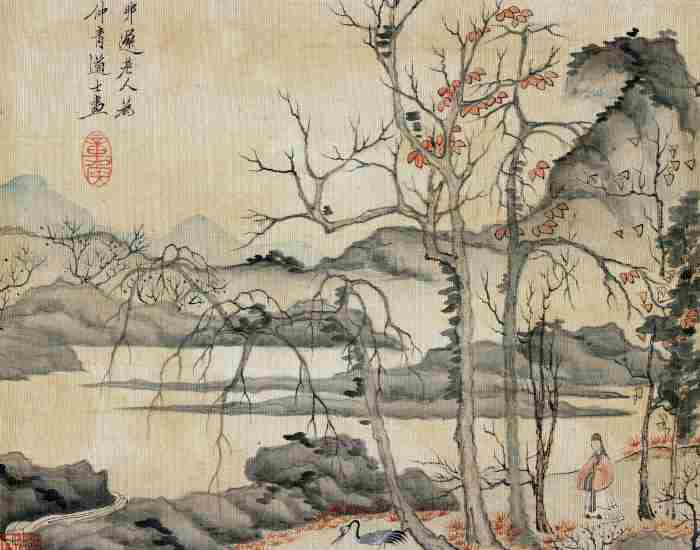Tempera paint is a versatile and time-honored medium in the realm of art. Derived from the Latin word “temperare,” meaning “to mix,” tempera paint has a rich history dating back centuries. Its origins can be traced to ancient civilizations, where it was notably employed in creating vibrant artworks. Throughout the years, tempera paint has evolved, yet its significance in the art world remains profound.

Historical Context of Tempera Paint in Art
- Historical Context of Tempera Paint in Art
- Tempera Paint
- Types of Tempera Paints
- Acrylics vs. Tempera
- Surfaces and Techniques
- Palette Knife Tempera Paint Techniques for Textured Surfaces
- Explanation of Different Techniques Used with Tempera Paint
- Use in Craft Projects
- Incorporating Warm Water and Plastic Film for Washable Paints
- Application and Use
- Specific Projects Suitable for Tempera Paint
The use of tempera paint can be traced back to the early Renaissance, where it was a primary medium for artists such as Giotto and Botticelli. During this period, tempera paint gained prominence for its ability to create detailed and luminous artworks. The method involves mixing pigments with a water-soluble binder, traditionally using egg yolk, resulting in a unique and lasting finish.
Popularity in Various Art Projects
Tempera paint has maintained its popularity across diverse art projects, making it a preferred choice among artists of all ages. Its user-friendly nature, combined with its accessibility, has made it a staple in educational settings, especially among children and students. The medium’s adaptability extends to various surfaces, providing artists with a wide array of options for creative expression.
Tempera Paint
Tempera paint, at its core, is a medium renowned for its water-soluble nature and vibrant color output. The term “tempera” itself refers to the method of mixing pigments with a binder to create a paint that adheres effectively to surfaces.
In artistic terms, tempera paint refers to a water-based paint that utilizes a binding agent to hold pigments together. This binding agent plays a crucial role in determining the consistency, texture, and overall characteristics of the paint.
Components and Binders Used in Tempera Paints
The fundamental components of tempera paint include pigments, a binder, and a solvent. One of the most traditional and widely used binders in tempera paint is egg yolk. The egg yolk serves as an emulsifying agent, facilitating the blending of pigments and enhancing the paint’s adhesion to surfaces.
Mention of Pigments and Their Contribution to Color
Pigments are finely ground particles that provide color to the paint. In tempera, pigments are suspended in the binder, and their characteristics determine the final appearance of the artwork. The use of high-quality pigments is crucial for achieving vibrant and long-lasting colors in tempera paintings.
Comparison with Other Paints
When considering tempera paint in relation to other popular paint mediums like acrylics and oils, the choice of binding agents becomes significant. Unlike oils that use oils as a base and acrylics that use acrylic polymers, tempera relies on water-soluble binders like egg yolk. This fundamental difference not only affects the texture of the paint but also influences drying time, flexibility, and the overall aesthetic of the finished artwork.
Types of Tempera Paints
Tempera paint offers a diverse range of options, each catering to specific artistic needs and preferences. Understanding the various types of tempera paints is crucial for artists seeking the perfect medium for their projects.
Student-grade Tempera Paints
Student-grade tempera paints are formulated with beginners and educational settings in mind. These paints often come in economical packaging and offer a balance between quality and affordability. They are ideal for classroom activities, children’s art projects, and introductory painting exercises.
Free Methods in Tempera Painting
For those who enjoy experimenting with artistic techniques, free methods in tempera painting provide a liberating experience. This approach involves exploring unconventional tools, surfaces, and mixing processes. Artists can embrace a more intuitive and spontaneous style, allowing for unique and unpredictable outcomes.
Acrylics vs. Tempera
When comparing tempera paint with other popular paint mediums like acrylics and oils, notable differences emerge. While acrylic paints use acrylic polymers as a binder and oils utilize oil-based binders, tempera relies on water-soluble binders such as egg yolk. This distinction not only affects the texture but also influences drying time, flexibility, and the overall appearance of the finished artwork.
Regular Tube Acrylics vs. Heavy Body Acrylics
Within the realm of acrylic paints, artists encounter choices between regular tube acrylics and heavy body acrylics. Regular-tube acrylics are versatile, easy to blend, and suitable for various applications. On the other hand, heavy-body acrylics have a thicker consistency, allowing artists to create textured and expressive works.
Discussion on Transparent and Fluorescent Colors
In the realm of tempera paints, artists can explore a vibrant array of colors, including transparent and fluorescent hues. Transparent colors add depth and layering possibilities to artworks, while fluorescent colors bring a dynamic and eye-catching element to the palette. These options provide artists with the tools to create visually striking and innovative compositions.
- More Post: Canva vs. Photoshop: Which Design Tool Should You Use?
- More Post: What Are The Different Shades Of The Color Green? Exploring the Spectrum in Design
Surfaces and Techniques
Choosing the right surface is paramount to achieving the desired outcome when working with tempera paint. The versatility of this medium allows artists to experiment with various surfaces, each offering unique opportunities for creative expression.
Ideal Surfaces for Tempera Painting
Paper
Paper is a classic and widely used surface for tempera painting. Its smooth texture allows for precise brushwork, making it an excellent choice for detailed artwork and illustrations.
Canvas
Canvas provides a more robust and textured surface, allowing artists to explore both fine details and broader strokes. The absorbent nature of canvas enhances the adherence of tempera paint.
Wood
Wood surfaces offer a natural and rustic backdrop for tempera paintings. The porous nature of wood allows the paint to penetrate, creating a distinctive finish.
Glass
For artists seeking unconventional surfaces, glass can be an intriguing choice. The transparent quality of glass adds a unique dimension to tempera artworks, especially when experimenting with light and shadows.
Discussion on Absorbent Surfaces and the Use of Primer
Understanding the absorbency of different surfaces is crucial in tempera painting. More absorbent surfaces, such as paper and wood, may require additional preparation. The use of a primer serves to create a uniform and stable base, preventing the paint from being absorbed too quickly and ensuring better control over color saturation.
Palette Knife Tempera Paint Techniques for Textured Surfaces
Experimenting with different techniques adds depth and interest to tempera paintings. One notable technique involves using a palette knife on textured surfaces. The palette knife allows artists to apply paint in thick, impasto strokes, creating a three-dimensional and expressive effect. This technique is particularly effective on canvas and wood, where the textured surface enhances the play of light and shadow.
Painting Techniques
Mastering various painting techniques is essential for artists seeking to unlock the full potential of tempera paint. From layering to color mixing, these techniques offer a range of possibilities for creating dynamic and visually appealing artworks.
Explanation of Different Techniques Used with Tempera Paint
Thick Layers
Applying thick layers of tempera paint allows artists to create texture and depth in their artworks. This technique, known as impasto, involves layering the paint in a way that builds up a three-dimensional surface. It adds a tactile quality to the painting and enhances the play of light and shadow.
Color Mixing
Understanding the intricacies of color mixing is crucial for achieving a broad spectrum of hues in tempera paintings. By blending primary colors, artists can create an extensive range of secondary and tertiary colors. This skill enables artists to achieve the desired color palette and add vibrancy and nuance to their artworks.
Use in Craft Projects
Tempera paint is a popular choice for a wide array of craft projects, offering versatility and ease of use. Its water-soluble nature makes it suitable for various applications, especially in projects involving different age groups.
Washable Tempera Paints for Young Children
For projects involving young children, using washable tempera paints is a practical and convenient choice. These paints are designed to be easily washable on skin and clothing, ensuring a mess-free and enjoyable creative experience for young artists. The non-toxic nature of tempera paint adds an extra layer of safety for children.
Incorporating Warm Water and Plastic Film for Washable Paints
To enhance the washability of tempera paints, artists can incorporate a couple of techniques:
Warm Water
Incorporating warm water when using tempera paint for crafts increases the washability of the paint. Warm water helps to lift the paint from surfaces more effectively, making cleanup hassle-free.
Plastic Film
Using plastic film as a protective layer during painting projects is an effective strategy. Placing plastic film over the work area or covering surfaces before starting the project makes cleanup easier, especially when working with young children.
Application and Use
Exploring the diverse applications of tempera paint reveals its adaptability and widespread use in various artistic endeavors. From educational programs to crafts, this medium finds its place in an array of creative projects.
Specific Projects Suitable for Tempera Paint
Poster Paints
Tempera paint is particularly well-suited for creating vibrant and eye-catching poster paints. Its quick-drying nature allows artists to layer colors and achieve bold, poster-worthy designs. The medium’s versatility makes it an excellent choice for both intricate details and broad strokes, ensuring that the final poster captures attention.
Fabric Paints
In the realm of textiles, fabric paints offer a unique way to infuse color into clothing or other fabric-based items. When properly applied and heat-set, tempera paint can adhere to fabric surfaces, providing a cost-effective and customizable alternative to traditional fabric dyes.
Educational Programs
The importance of tempera paint in schools cannot be overstated, especially within the context of educational programs. Its accessibility, ease of use, and non-toxic nature make it an ideal medium for introducing students to the world of visual arts. Incorporating tempera paint into school curricula helps nurture creativity, fine motor skills, and an appreciation for artistic expression from a young age.
Mention of Its Use in Crafts and Various Artistic Endeavors for Responsible Students
Beyond the classroom, tempera paint is a valuable resource for crafts and various artistic endeavors. Responsible students can explore their creativity through a multitude of projects, including canvas paintings, woodwork, and collaborative mural creations. The versatility of tempera paint fosters a sense of experimentation and innovation, encouraging students to think outside conventional artistic boundaries.
FAQs
Addressing common questions about tempera paint helps dispel misconceptions and provides valuable insights into its characteristics, uses, and suitability for different applications.
Can tempera paint be used on fabric?
Yes, tempera paint can be used on fabric to a certain extent. While it may not have the permanence and durability of traditional fabric paints or dyes, tempera paint can be applied to fabric surfaces for various artistic projects. It’s essential to note that for long-lasting results, proper preparation and heat-setting are recommended. Applying heat to the painted fabric, typically through ironing, helps set the paint and improve adhesion.
What is the difference between tempera and acrylic paint?
The primary difference between tempera and acrylic paint lies in their composition and binding agents. Tempera paint uses a water-soluble binder, often egg yolk, whereas acrylic paint uses acrylic polymers as a binder. Acrylic paint offers a more flexible and durable finish, making it suitable for canvas paintings and other professional artworks. Tempera, on the other hand, is often favored for educational settings, crafts, and projects with young artists due to its non-toxic nature and easy washability.
Is tempera paint suitable for professional artists?
While tempera paint is commonly associated with educational settings and children’s art projects, it can indeed be suitable for professional artists. Some artists appreciate tempera for its unique matte finish, quick drying time, and the ability to create fine details. However, its limitations, such as a potentially thinner consistency and reduced permanence compared to other professional-grade paints, may influence an artist’s choice. Professional artists often experiment with various mediums to find the one that aligns with their artistic vision and preferences.
Clarifying Misconceptions and Providing Tips
It’s crucial to understand that the permanence of tempera paint may not match that of some other professional-grade paints. While it offers vibrant colors and a distinctive matte finish, artists should be aware that tempera may have a thinner consistency compared to heavy-body acrylics or oils. Adjusting techniques and layering can enhance the richness of tempera paintings.
Matte Finish
One notable characteristic of tempera paint is its matte finish. This property can be advantageous for certain artistic styles, providing a flat and non-reflective surface. Artists seeking a specific aesthetic may find tempera’s matte finish appealing, allowing for precise control over highlights and shadows.
- More Post: What Are the Different Types of Paper and Their Uses?
- More Post: 7 principles of design in art, with examples
Conclusion
In conclusion, tempera paint stands as a dynamic and versatile medium with a rich history and a myriad of applications. Key points about tempera paint highlight its distinctive characteristics, emphasizing its appeal to a diverse range of artists.
- Water-Soluble Nature: Tempera paint’s water-soluble nature facilitates easy mixing, blending, and cleanup. This property makes it an accessible and user-friendly medium, particularly suitable for educational settings and projects with young artists.
- Non-Toxic Properties: The non-toxic nature of tempera paint is a significant advantage, especially in environments involving children and students. Its safety makes it a preferred choice for classroom activities and art projects, aligning with the importance of responsible artistic practices.
- Encouragement for Experimentation: Artists are encouraged to experiment with tempera paint in their art projects. The medium’s versatility allows for a wide range of applications, from detailed illustrations to textured impasto works. Its quick drying time and compatibility with various surfaces make it an ideal choice for creative exploration.
- Emphasis on Educational Settings: Tempera Paint’s suitability for educational settings is underscored. Its non-toxic and washable properties make it a practical choice for introducing students to the world of visual arts. Incorporating tempera paint into classroom activities fosters creativity, artistic expression, and skill development among students.
- Versatility and Popularity: Tempera paint’s versatility is highlighted, making it applicable across different age groups and artistic styles. Its popularity extends to various projects, from educational initiatives to professional artworks, emphasizing its enduring relevance in the art world.
- Consideration of Toxicity in Acrylics and Oils: A noteworthy consideration is the contrast between tempera paint’s non-toxic nature and the potential toxicity associated with certain student-grade acrylics and oils. This distinction further establishes tempera as a safe and accessible choice for artists of all levels.
References
For further exploration of tempera paint and related mediums, the following list of reputable sources provides valuable insights and in-depth knowledge:
- Mayer, Ralph. (1991). “The Artist’s Handbook of Materials and Techniques.” Viking.
- Doerner, Max. (1984). “The Materials of the Artist and Their Use in Painting.” Harcourt Brace Jovanovich.
- Hardy, George. (2003). “Painting Materials: A Short Encyclopedia.” Dover Publications.





